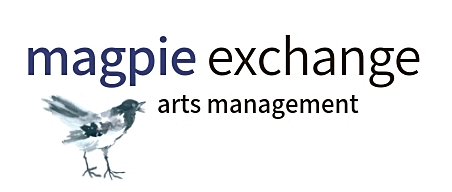As a new theatre agent representing Calgary-based artists with their touring aspirations, I often ponder whether the aggressive political and economic narrative projected by our city as Canada’s oil and gas industry capital affects outsider views of art being made here. This question stems in part from the fact that when I moved to Calgary from Vancouver four years ago, I myself believed that Calgarians live in a bubble. Now that I represent Calgary artists, I am keenly aware that such generalizations could affect the views of artistic leaders in our national and international landscape. (If artistic programmers from other countries know anything about Calgary, it is to identify Calgary as a ‘tar sands’ capital.)
As artistic programmers increasingly seek art which speaks to social and environmental issues, how much do I need to counter this narrative with colleagues from outside of Alberta? This dominant narrative of our city which stokes a binary world view is not reflective of Calgary - one of Canada’s largest and most culturally diverse cities - or of the varied, inventive, and progressive work being created within its arts scene.
My frame shifted recently during the 2020 PuSh Festival Industry Series in Vancouver. At the curated Pitch Session which had a climate crisis theme, three Calgary-produced projects were chosen to be pitched:
Extinction Song created by Ghost River Theatre, Downstage, and Bucket Club (UK), explores the human experience of our planet’s sixth extinction event through a kaleidoscope collision of original music, song, movement and animation and addresses our collective climate anxiety in the most vital and preposterous of performances.
Niitsipowsiin, produced by Inside Out Theatre and created by Justin Many Fingers, is a journey through the living history and cultural significance of Back Foot Sign Language, following a Blackfoot woman raised apart from her family, land, and language.
Kinship and Mystery: A Way of Working, performative projects created by interdisciplinary artists Mia & Eric, which investigate interspecies relationships, biodiversity, and ecological narrative in cities, small towns, and rural spaces.
The national and international delegates at the PuSh Festival were especially intrigued by these artists’ perspectives on the climate crisis precisely because they make their art “on the front lines” of the oil and gas industry. For example, a film producer commented on the dire sarcasm hinted at in Extinction Song. Calgary artists may not be on the front lines of environmental impact but they are on the front lines of the debate and as such, the PuSh delegates placed value on their voices.
An aside…
March 2011. I am listening to South African trumpeter Hugh Masekela give a talk on the role of the artist as cultural ambassador. He is taking the position that artists don’t set out to make art to be cultural ambassadors or revolutionaries, but that artists live, engage, and make art in contexts – political, social, environmental. For him, it was under Apartheid. An artist’s context affects their perspectives and artistic practice, and so sometimes, artists inherently become activists whether they intend to be…
-----------------
While the artists I represent make theatre for different motivations, all of them are making art in an increasingly heated civic environment situated where Canada’s oil and gas industry is headquartered. As the climate crisis escalates, their particular placement and contextualized art will be important voices in the global conversation.
